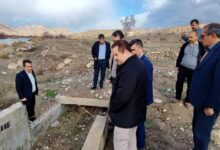The face of “Shasosa” in the dust of unkindness
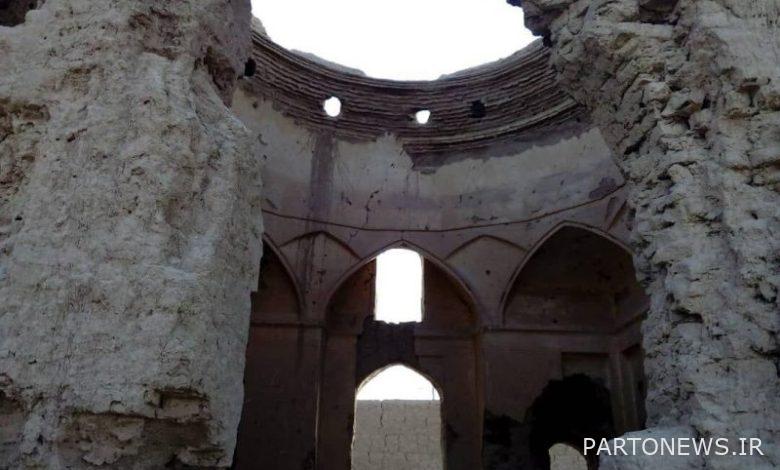
“Shasosa”, a mysterious building in the heart of the plains of “Malahabib” Aran and Bidgol, which is inextricably linked with Sohrab Sepehri in the office of “Avar Aftab” of this poet, according to cultural heritage activists, there is no way and decay in Has taken over.
Who knows how and how “Shasosa” has reached this point of time and now on the verge of destruction ?! Or from which vestibule of time and era was he born and now, in the sadness of forgetfulness, he walks the path of destruction ?! One does not know exactly what period or place Shasosa belonged to; Monastery or shrine ?! But Shasosa, the inspiring solitude of Sohrab Sepehri, once and only in the heart of the plain of “Mullah Habib”, in two steps of Kashan, which is immortalized in the office of “Avar Aftab” Sohrab, now spells nothingness in the fence of builders and in the office of Avar of Forgetfulness; There is no such thing as, according to the lovers of historical monuments, there is no way left until the complete destruction of the building, and in the words of Sohrab, “his finger has slipped nowhere!
It is no more sad to know that, with so much carelessness and carelessness towards Shasosa, perhaps soon, with a rain, or a meeting resulting from the abrupt removal of the plain aquifer, Shasusa’s face design suddenly disintegrates and Blow away the dust; This is the interpretation that Sohrab says in private with Shasosa.
But where is Shasusa and what is it? Perhaps Shasosa is more like a quadrangle, like all the other quadrangles in the plains of Kashan; But this building is not four-arched in the Malahabib plain, two kilometers east of Kashan, which does not belong to which period, and the sky, with all its vastness, is located in the heart of its open dome.
It may be thought that part of the Shasosa dome has collapsed, but in fact the arch of this dome is the sky, and therefore the mysterious use of this building has been added. Shasosa, however, despite all the suffering he suffers from oblivion and destruction, still has not lost his color and majesty and is waiting for a corner of the eye from the trustees who claim that the ownership of this building is in their hands.
In an interview with IRNA, archaeologist Mohsen Javari further explores the dimensions of the building’s longevity and use. He believes that the building is more like a monastery because of its shape and form and because it is unique. The studies of this archaeologist trace the longevity of Shasosa to the patriarchy and the seventh century AH. However, he believes that the plan of the surrounding buildings should be readable in order to make a more accurate judgment. According to Javari, Shasosa had surrounding buildings that had been destroyed over the years, and with this reckless trend of institutions claiming ownership, what was left of Shasosa would also disappear in the near future.
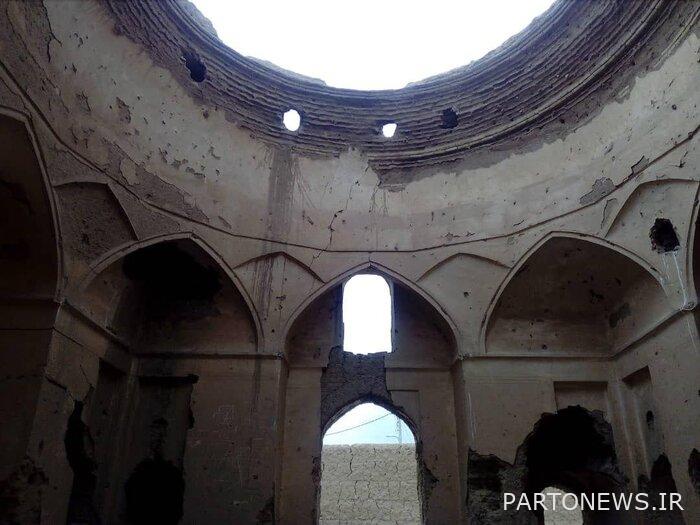
The story is that the Endowment Office is on one side of Shasosa and on the other side of the road and urban development, and each of them claims that the ownership of the building is in their hands. There are also real people who say that the Shasosa building was inherited from their fathers, who have water and land in Mullah Habib plain. Thus, there are many claimants and owners of Shasosa! But really Shasosa is in the midst of all this and not so much, he is being destroyed one by one, helpless and helpless.
All this while according to Article 13 of the Law on Restoration and Restoration of Historic Buildings and Textures, if a historic building and registered as a national monument is in the possession of an executive body, that body is obliged to protect that building. Shasosa nationally registered building, but according to cultural heritage activists, has not been protected or helped by any institution in all the past years, and today even private sector investors are hesitant to invest in and renovate this historic building due to dual or multiple ownership of the building. have became.
The face in the veil of oblivion
This is the story of Hossein Imanian, a faculty member at Kashan University and a member of the Sabahi Bidgoli Cultural Heritage Association, which, according to him, has put Shasosa in a tight spot: “The first problem is that many workshop buildings have been built around Shasosa Their height may be higher than this building, and therefore it is very difficult to see Shasosa Behoj except from the old Aran Bidgol road to Kashan, from the other three sides. But the main problem is the ownership of the building, it is not clear who owns the building! “In the meantime, some real people claim that they inherited it from their fathers, who owned water and land in the Malahabib plain, but with my follow-up, there is no document about this.”
According to the believers, pits were created by profiteers in order to spy on some parts of the building and parts of the walls were destroyed. There are also natural and deep cracks in the rafters (walls) and possibly due to subsidence that if rescue and consolidation work is not done, a part of the building, especially the rest of the Shasosa arch, which is seriously damaged, may be rained on. Heavy collapse.
From the believers’ point of view, the first thing that the cultural heritage department of Aran and Bidgol city should do is to try to determine the ownership of Shasosa, and the second thing is to do privacy studies to find out more about new constructions and shortening and hiding the building. Avoid what is.
In an interview with IRNA, the faculty member of Kashan University added: “Rescue operations must be carried out quickly and the old annex wall around Shasosa must be completed.” After that, one has to go to the excavation inside Shasosa and do archeological works, because the antiquity of Shasosa can be identified with the artifacts and pottery that will be found.
Shasosa, behind the scenes of multiple ownership
On the other hand, Chakri, head of the Cultural Heritage, Tourism and Handicrafts Department of Aran and Bidgol, believes that the most important problem of Shasosa is the multiplicity of ownership: the investor has arrived and is ready to renovate the building at his own expense. In fact, this building has a ready-made restoration plan. We had a few meetings with the central government to discuss the entry of investors, but the problem is that the endowment office says it is the owner, and on the other hand, the road and urban development department says it is the owner!
In response to an IRNA reporter’s question about the difficult situation in Shasusa in the midst of the conflict, Chakri said: are; But to find your answer, go and see the buildings in Aran Bidgol, which are owned by the municipality, endowments and the road and urban development department – except for the buildings that the municipality has done some repairs! See what condition the buildings are in and what they have done ?!
In an interview with IRNA, Chakri added: “Article 13 of the Law on the Restoration of Historic Buildings and Textures is related to the executive bodies, which states that the executive bodies that own historical buildings and are more than endowments are obliged to take care of these buildings, but We have not seen anything! Unfortunately, the view is that when we register a building, we say why don’t you spend it, they say, you registered it, you have to pay! We say we registered to be protected. My question is that instead of asking the owner for restoration, why is everyone putting pressure on the cultural heritage ?!
Beyond Chakri’s critique of historic property organizations, he argues that the dual ownership of the Shasosa building has now made things difficult: My point is that when the building is in this state, the investor is undecided and reluctant. Do something!
He added: “Shasosa building is always on our list of credit offers, but we have a lack of credit and the conditions are not such that we can renovate this building.” This building was included in the list of national monuments in 1998, but I do not know that since that year, the slightest credit has been allocated to this building and it has been restored.
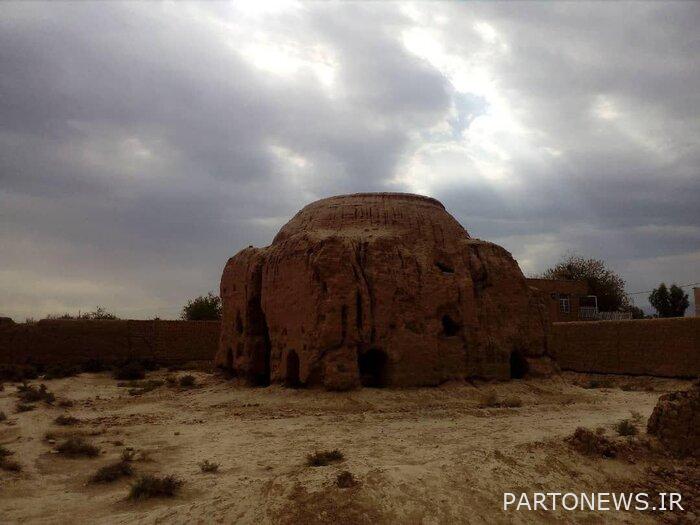
A triangle for Shasosa
On the other hand, in examining the dimensions of this story, Mehdi Hafezian, head of the Endowment Office of Aran and Bidgol, in response to why Shasosa was left alone, said: “Our device does not have the credibility to enter directly into the discussion of Shasosa restoration.” We do not have government credit, and in addition to Shasosa, we have other places that have historical and heritage issues, but we do not have government credit to spend. For this reason, we called on those who wish to participate to enter into this issue in the form of endowment contracts. Therefore, according to the expert and according to the investor, which depends on the repairs and restoration that the private sector wants to do, we can transfer the building, but the ownership of the building can not be transferred.
He added: “Shasosa building is registered by the Endowment Office, but the Natural Resources and Watershed Management Department has considered this place as a natural resource land, which has created a problem.”
However, Hafiz does not see the issue as complicated and believes that this requires a triangular triangle with investor, endowment and natural resources sides to come to the right conclusion together.
According to the head of the Endowment Office of Aran and Bidgol, the Natural Resources Department is a good companion, and if the investor is still in Egypt, a meeting can be held in the courtyard and under the supervision of the governor and in the form of a meeting, the problem can be resolved for several years. .
Confirming IRNA’s remarks about the rapid erosion of the Shasosa building these days, Hafezian said: “Shasosa is destroyed by erosion every year due to erosion and there may be no trace of it in the next ten years.”
We have no problem assigning, provide documentation
But in this connection, Amir Hossein Assarzadeh, head of the Road and Urban Development Department of Aran and Bidgol, told IRNA that if the Endowment Office has enough documents related to the acquisition of the Shasosa building, it should be handed over according to them.
He emphasized: 120 hectares of land has been handed over to us from the Department of Natural Resources, including Shasosa, and this land has been declared national. The custody of the lands is within the confines of the Road and Urban Development Administration. If the endowment provides evidence that Shasosa is endowed, we can hand over the building.
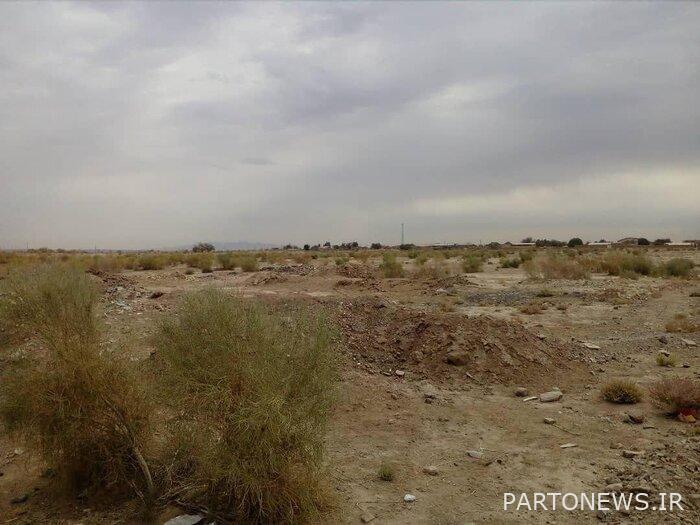
Assarzadeh reminded: “We are pursuing to acquire the lands around Shasosa and give it to the investor so that both Shasosa is revived and a suitable area is designed for that complex.” We want to cooperate with anyone who wants to revive Shasosa, but the argument is that Shasosa alone is not enough for investors and they are asking for more land to implement their plan; These lands adjacent to the Shasusa building are gardens on which natural resources are sensitive.
He emphasized: natural resources do not have a problem with land transfer except in approved hand-planted fields. In this regard, we have written to the natural resources department of the city to inform us about the approved hawthorn planting lands. If the approved gardens are not located anywhere other than the area around Shasosa, we request a change of agency.
Everything is ruled out, in clarifying the dimensions of a protest
On the other hand, Seyed Mojtaba Sharifian, head of the Natural Resources and Watershed Management Department of Aran and Bidgol, on the other hand, in order to investigate the difficult conditions of these Shasosa days, finally pours clean water on the IRNA reporter and reminds him of another unseen incident; That there is another claimant for Shasosa, and yet we must wait.
Sharifian explained: “If the investor has an approved plan, even if the fields are planted, the plan must be approved by our technical committee. There is no problem in this regard. The problem, however, is that in the area where we have implemented the law, there is a protest.” Our law has been implemented and nothing can be done until the final task is determined.
The nobles refer to the probable heirs of water and land in the Malhabib plain, who say that these lands and everything in them are their property! Confused, the fate of the Shasosa building is now becoming more complicated and the questions more confusing! But cultural heritage activists say there is no evidence to support this claim, but it remains to be seen what the outcome of this protest will be against the implementation of the Natural Resources Management Act. Or they come from the Natural Resources and Watershed Management Department, the Roads and Urban Development Administration and the Endowment Administration to take a few steps forward to preserve a valuable heritage that is now in disguise and forgotten, or they want Shasosa as a monument and privacy. Sohrab Sepehri’s inspiration is not forgotten in the wind and should be destroyed ?!
Shasosa building is located two kilometers from Kashan city and next to the old Kashan-Aran and Bidgol road, behind the Kashan railway line. ”Is related. It is said that Sohrab belonged to this building and used to go to it and write poetry there.
According to the article “Recognition of the historical mansion of Shasosa”, some have considered this building as the tomb of one of the kings of Susa and some consider it as a monastery. But what is clear is that, according to the available documents, this building was respected by the people, but its status and respect among the people has gradually diminished. The oldest existing document in which this building is mentioned is the book “History of Kashan” by Sheriff Zarabi, which the author has named as “Shah Si Siah”. Regarding the composition of “Shah Si Siah”, a linguist and expert in Iranian languages believes that “Si” means reservoir and “CIA” means black; Thus the meaning of the phrase “Black King” is more or less clear; The title of Shah is also the prefix of many tombs and shrines in Kashan and Iran.

